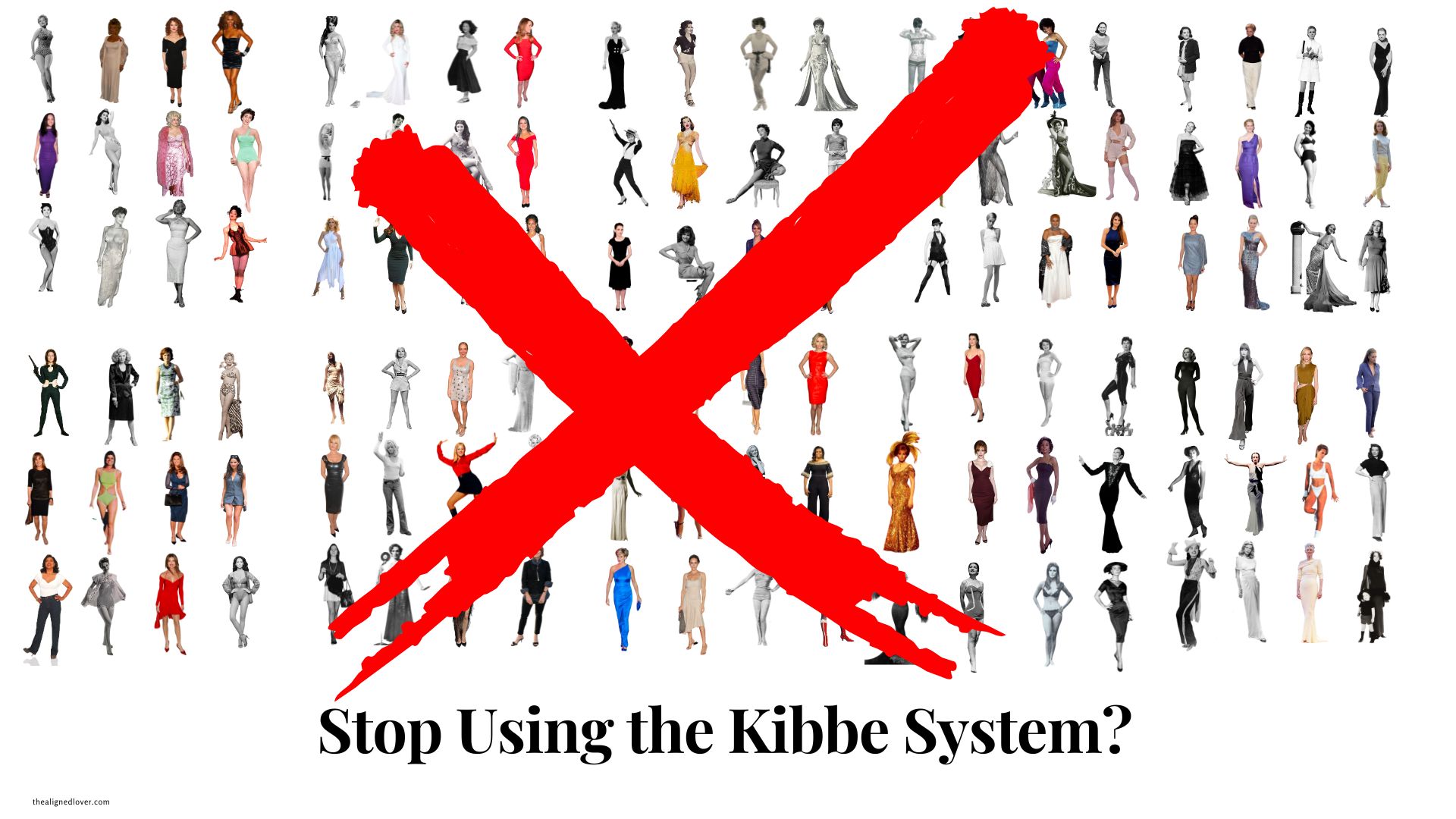A stylist who draws heavily from the Kibbe system is telling you to…stop using it?
Yes. And no, this isn’t for clickbait or one of those reverse-psychology lists.
Though I genuinely adore and love the Kibbe system and all Yin-Yang based style philosophies, I’ve witnessed too much frustration and rigidity around these structures. For some, the theory and inevitable debating over the applications of said theories is an engaging, stimulating, and ultimately productive journey that forces one to contemplate visual patterns as potential emanations from abstract sources like persona, essence, and energy. For others, the Kibbe system just seems overly complicated, self-contradictory, and lacking in relevant style examples.
For every Kibbe enthusiast that genuinely gets a kick out of observing the spectrum of the fabric drape of silk across a variety of shoulder shapes, there is a Kibbe eye-roller who genuinely doesn’t care about the countless list of visual cues and would rather create outfits based on current looks or around the agenda of minimizing certain physicals traits while maximizing others.
Both are completely valid. What’s crucial is identifying which path you want to go down.
Romantic vs Realistic Systems
If you love the contemplative path of Kibbe and enjoy observing a wide range of examples to extract patterns and data, then this system will infuse your approach to style forever. In my eyes, Kibbe is a Yin system- it’s based on relativity, is decentralized and asymmetrical in that it doesn’t provide a neat and tidy categories of data points for each type, and it’s best consumed in a dreamy cycle of laser-focused isolation softening into a softer, wide-lens gaze.
If you love a more end-based approach and enjoy creating outfits based on an outcome (like a shape, a theme, a goal), then the Kibbe system might be a bit lacking in the Yang department of clarity, direct action, actionable data points and measurements that can be plugged into formulas like waist-tp-hips ratios and torso-to-leg size). This approach is better suited to body-shape systems or with a certain visual style or philosophy in mind (like minimalism or maximizing the appearance of an hourglass shape or dressing to not be so perceived).
Unrealistic Style Expectations
Few people fall completely under one camp. Navigating the spectrum requires an honest look at your tendencies and desires. Even if you find your relative position along the spectrum, there will be times that you lean too hard in one direction and your approach to style becomes imbalanced. Imbalance will show up as disatisfaction and unrealistic expectations:
-You feel like your style never truly expresses the core of you being 24/7 which means you put way too much emphasis on controlling the collection of symbols that relate to your personal narrative. Clothes can never express the abstract and fleeting qualities of your existence.
-You feel bogged down by all style rules and hate being imposed upon but you still expect your clothes to look extremely flattering. This means you need to figure out what’s more important: choice of expression or embracing the confines of your physicality and the concept of pleasing proportions.
-You base your wardrobe investments on life’s highlights and neglect the less glamorous demands of daily living which leads you to having nothing to wear to casual outings which leads you to feeling overdressed or underdressed.
A (Relatively) Balanced Approach
Tempering both the Yin romanticism with the Yang realism is the best way to navigate the complexities of cultivating a satisfying and sustainable wardrobe. Your personal preferences are not the only factor at play; budget, availability, tailoring, maintenance, and general life demands also influence your closet. Beyond that, figuring out your current approach to style and comparing it to a more beneficial process also requires another round of self-assessment and contemplation.
If that all sounds like a lot of work…it is. That’s why I’m here to support you along your journey. Feel free to reach out with any questions or inquiries about my style packages. I’m happy to discuss and tailor my approach to suit your end goals.
xx
Nona
